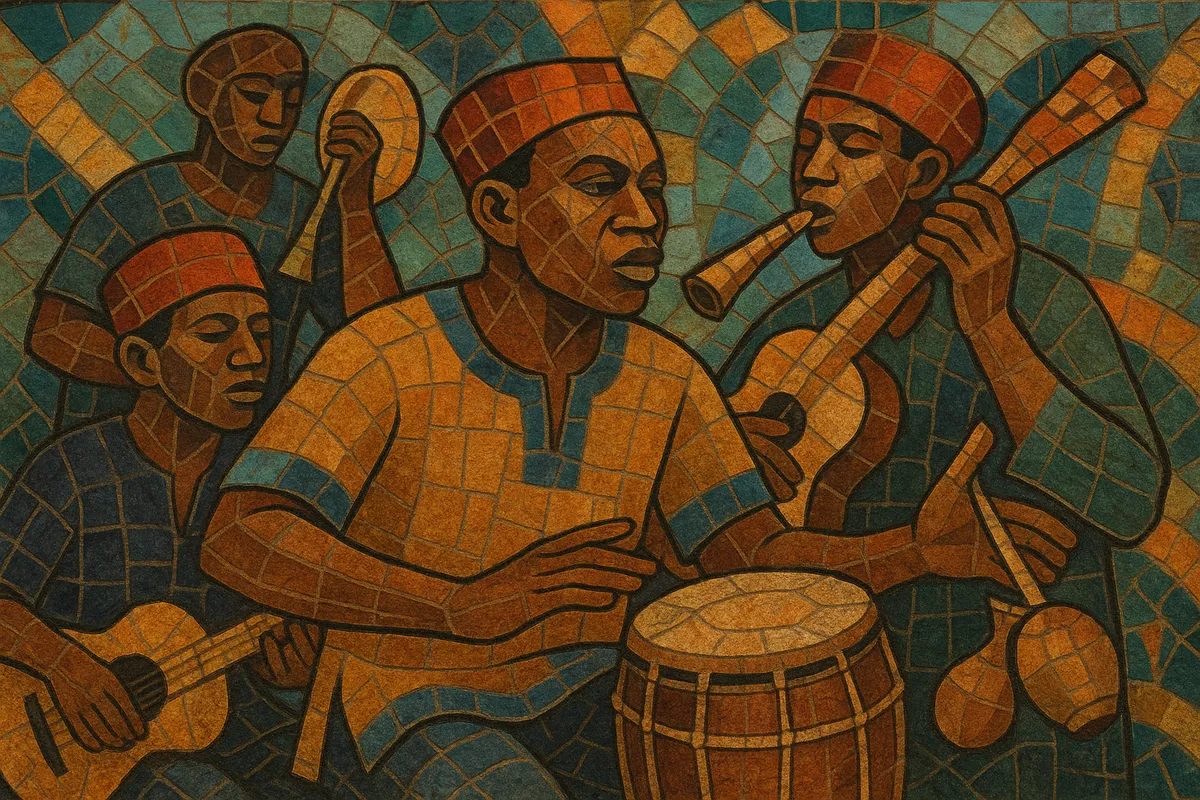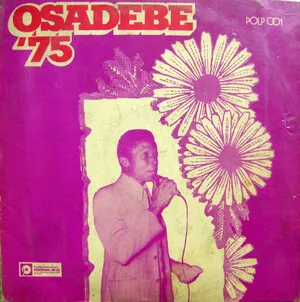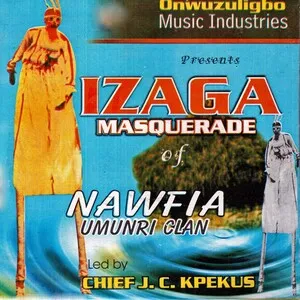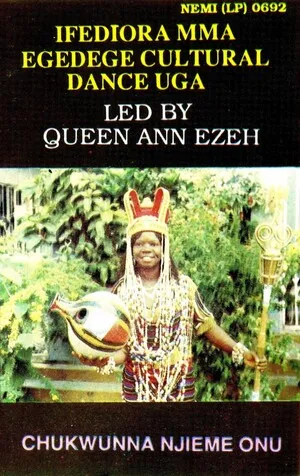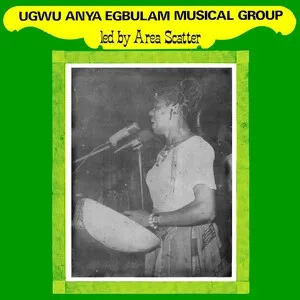Igbo music refers to the traditional and modern musical expressions of the Igbo people of southeastern Nigeria. It encompasses ritual and festival drumming, gong ensembles, dances, praise-singing, and narrative song, as well as 20th‑century guitar- and band-led styles such as Igbo highlife and contemporary pop-rap in the Igbo language.
Core timbres come from distinctive instruments such as the ogene (iron gong), ekwe (slit drum), udu (clay pot drum), ichaka/ishaka (rattles), igba (skin drum), oja (wooden flute), and ubo aka (thumb piano). Vocals favor call‑and‑response, tonal text-setting that respects Igbo language inflection, and proverbial, moral, and praise content.
From the colonial era onward, brass band, church choral music, palm‑wine guitar, and pan–West African highlife shaped a modern Igbo sound. In turn, Igbo musicians helped define the Nigerian branch of highlife, later inspiring contemporary afropop and Igbo rap while revitalizing fast, metal-gong–driven ogene performance for dance and celebration.
Igbo music predates written records and developed around community life, ritual, and dance. Ensembles centered on idiophones and drums—especially ogene (iron gong), ekwe (wooden slit drum), udu (clay pot drum), and rattles—provided complex, interlocking polyrhythms for dances such as atilogwu and for masquerade (mmanwu) ceremonies. Singers delivered call‑and‑response refrains with texts rich in proverbs (ilu), praise, and social commentary, while the oja flute and ubo aka (thumb piano) added melodic color.
Between the 1910s and 1940s, coastal palm‑wine guitar styles and colonial brass bands spread through southern Nigeria. Christian hymnody and choral singing introduced four‑part harmony and Western cadences, dovetailing with indigenous call‑and‑response practice. These influences set the stage for the adoption and localization of highlife, a pan–West African dance music that began in Ghana and took root in southeastern Nigeria.
From the 1950s through the 1980s, Igbo bandleaders helped define the Nigerian strain of highlife. Chief Stephen Osita Osadebe, Celestine Ukwu, the Oriental Brothers (led by Dr Sir Warrior), Oliver De Coque, Mike Ejeagha, and Morocco Maduka fused lilting 12/8 grooves, guitar arpeggios and riffs (often dialoguing with ogene patterns), and Igbo‑language vocals. Congolese rumba/soukous guitar phrasing also entered the palette, yielding fluid lead lines and extended dance sections. These bands became staples of social events, radio, and vinyl, embedding Igbo melodic shapes and proverbial lyricism into urban popular culture.
As Nigeria’s music industry globalized, Igbo musicians diversified. Highlife persisted through new generations (e.g., Umu Obiligbo), while afropop stars like Flavour modernized highlife rhythms with contemporary production. Ogene performance experienced a popular revival on stage and online, showcasing high‑energy metal‑gong ensembles. Meanwhile, rappers such as Phyno foregrounded Igbo‑language verses over hip‑hop and trap beats, extending Igbo music’s reach into global youth culture without abandoning its call‑and‑response hooks, danceable grooves, and proverbial speech.

